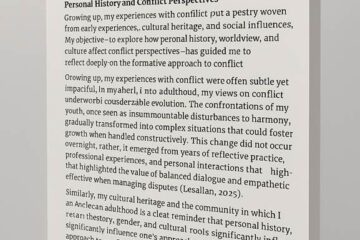June 20, 2024

Exploring Benedict’s Vision of Monastic Life
The Rule of St. Benedict (Benedict, 530), written by St. Benedict of Nursia in 530, offers a comprehensive manual for monastic life. It has greatly influenced Western monasticism and remains pertinent for spiritual development in modern times. This assessment examines Benedict’s concept of monastic life, emphasizing its practical application, intriguing elements, and significance for personal spiritual advancement.
The Rule of St. Benedict delineates a well-organized and rigorous way of life for monks, placing emphasis on obedience, humility, and communal living. As described in the Rule, monastic life is marked by a blend of prayer, work, and study. The daily schedule, referred to as the Divine Office, ensures that monks set aside specific times for prayer throughout the day, promoting a rhythm of spiritual discipline (Benedict, 530). This structured way of life seeks to foster a profound sense of spiritual awareness and devotion.
The Rule underscores the significance of communal living. Monks are required to reside together harmoniously, providing support for each other on their spiritual path. This sense of community is essential as it cultivates a feeling of belonging and mutual responsibility. The abbot, as the spiritual leader, plays a critical role in guiding the community and ensuring compliance with the Rule (Benedict & Boniface, 1949).
The Rule’s emphasis on humility is particularly fascinating. Benedict delineates twelve steps of humility, providing monks with a framework for spiritual development. These steps prompt monks to acknowledge their limitations, yield to God’s will, and exercise self-restraint (Benedict, 530). This emphasis on humility serves not only as a spiritual discipline but also as a method for promoting a peaceful community.
The concept of “ora et labora” emphasizes the balance between prayer and work. The Rule of St. Benedict highlights the importance of integrating manual labor and study alongside prayer in the monastic life. This approach ensures that monks stay grounded, remain productive, and contribute to the self-sufficiency of the community (Benedict, 530).
The principles delineated in the Rule of St. Benedict carry great relevance for personal spiritual development, extending beyond the confines of monastic life. The focus on discipline, humility, and communal living can be transferable to our daily lives. For example, dedicating specific moments for prayer or meditation can nurture a more profound spiritual consciousness. Embracing humility by recognizing our own limitations and endeavoring to support others can promote personal growth and enhance relationships (Benedict, 530).
Moreover, the balance between work and prayer can be adapted to modern life by ensuring that one’s daily routine includes time for both spiritual practices and productive activities. This balance can lead to a more fulfilling and centered life.
The Rule of St. Benedict presents a profound understanding of monastic life, stressing the importance of discipline, community, and humility. Its principles continue to be applicable for individual spiritual development, offering a timeless roadmap for those wishing to enhance their faith connection. People can create a harmonious and spiritually fulfilling way of life by incorporating these principles into their daily routines.
References:
Benedict, S. (530). The Holy Rule of St. Benedict. Retrieved from
https://www.ccel.org/ccel/b/benedict/rule/cache/rule.pdf
Benedict, S., & Boniface, R. (1949). The Holy Rule of St. Benedict.




1 Comment
Tina Wyman · June 24, 2024 at 3:03 am
Its like you read my mind! You appear to know so much about this, like you wrote the book in it or something. I think that you can do with a few pics to drive the message home a little https://brazz.org/ bit, but other than that, this is fantastic blog. A great read. I’ll certainly be back.
Comments are closed.